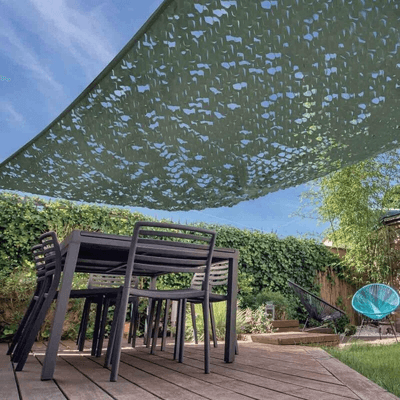In the animal world, camouflage is a precious asset to protect yourself from predators or to hunt in all discretion. Many animals have developed extraordinary concealment techniques that allow them to blend into their environment. Discover the best camouflages observed in certain species and how they take advantage of their skills to ensure their survival.
The owl, master of aerial mimicry
Some species of owls have a plumage that perfectly imitates the bark of the trees on which they perch. Their coloring varies from gray to brown, including lighter shades, according to their natural habitat. During the day, these night birds often rest against the trunk of a tree, where their appearance makes them practically undetectable.
The marsh owl, a master of illusion
The marshes owl is a striking example of this type of camouflage. Its livery looks like it to be mistaken for the bark of a poplar, while its closed eyes simulate the nodes of the wood. When it is disturbed, this clever raptor stretches his body and closes his wings to further accentuate this illusion and thus escape the prying eyes.
Uroplatus Gecko, a true camouflage artist
Originally from Madagascar, Uroplatus Gecko is a reptile whose body is covered with skin surprisingly similar to the bark of trees. Its flattened morphology and its changing colors allow it to blend completely into its environment. In addition, the edges of his skin are wavy and shredded, which visually breaks his outline and makes her detection even more difficult.
A formidable technique to hunt
Uroplatus Gecko uses this incredible capacity to catch prey without being spotted. He stops and patiently waits for an insect to pass within his reach. Thanks to his prehensile tail, he can even hang his body in the air, thus reinforcing the impression of being only a simple part of the tree on which he is located.
The Mute Lagopone, king of Alpine discretion
This discreet bird lives in the European and Arctic mountains, where it is essentially feeding on buds and young shoots. The silent lagopède has a plumage particularly suitable for its environment: in winter, it is almost entirely white to merge with the surrounding snow, while in summer, gray and brown feathers imitate the rocks and the vegetation of the alpine ridges.
A seasonal color change
The mute lagopède makes a moult twice a year to change the color of its plumage. This process allows him to constantly adapt his appearance and thus escape the coveting predators.
The toad, a virtuoso of concealment
The toads are amphibians whose granular skin is often covered with protuberances or warts. This rough texture gives them a dull and irregular appearance, ideal for blending into the carpets of dead leaves or the damp soils that they frequent.
Colors adapted to their environment
The coloring of the toad varies according to its habitat: it can be uniform or have complex and contrasting patterns, all in tones ranging from yellow to brown through green. These nuances allow him to camouflage himself effectively and go unnoticed with possible predators.
Camouflage is therefore an essential strategy for the survival of many animal species, whether it be owl, from theUroplatus Gecko, of Mute Lag or even toad. Thanks to these incredible concealment techniques, these animals can protect themselves from dangers and prosper in their respective natural environments.







Let a comment
All comments are moderate before being published.
This site is protected by hCaptcha and the hCaptcha Privacy Policy and Terms of Service apply.